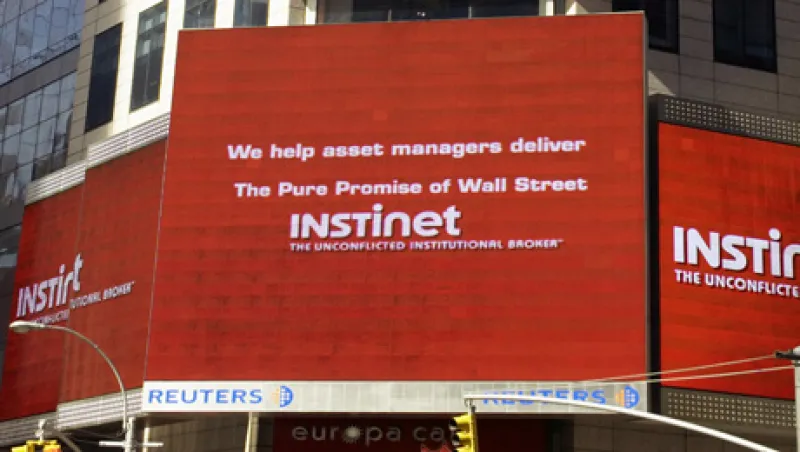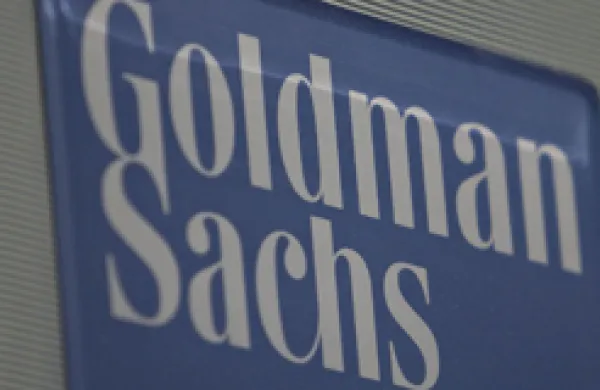There’s a new way to arrange meetings between companies and the long-term investors they covet. Instinet’s Meet the Street product works much like an online dating service.
Instinet uses customized criteria to match corporate officers with investors. The brainchild of an equity analyst-turned-hedge fund manager-turned-serial entrepreneur, Meet the Street was designed to ease the time-consuming task of setting up investor meetings. Dan Dykens, the creator of Meet the Street, designed the service to allow portfolio managers to enter a list of companies they want to meet. The companies’ investor relations staff can choose from this list and directly arrange meetings on a confidential basis.
As with online dating services, the aim is that two parties will find a perfect match.
“A significant percentage of meetings I took were with companies I never had an intention to invest in,” says Dykens of his time at Clipper Capital Management, a Boston-based hedge fund he launched in 2002 and sold four years later. A chief executive’s time is very valuable, and using it ineffectively is not constructive, he says. Thinking there had to be a better way to set up these meetings in favor of the issuer, Dykens launched Meet the Street in 2009. He sold the company to Instinet in February 2010.
A professor of business administration at Harvard Business School, Eugene Soltes, has studied the challenges that corporate leaders have in getting their stories in front of the most-desirable investors, like pension funds, college endowments, foundations and asset managers with a long-term perspective. In a research paper published in May and coauthored with University of Southern California professor David Solomon, Soltes reported that investors that are bigger, have greater turnover in their holdings and own a proportionally larger amount of equity in the publicly held company gain greater access to management. The paper, titled “What Are We Meeting For? The Consequences of Private Meetings with Investors,” also concluded that smaller companies tend to get crowded out.
Soltes points to the case of a particular midcap company he has followed for several years (which he declines to identify). To gain access to desirable potential investors, this company agrees to quarterly meetings with four large hedge funds, arranged by sell-side analysts who do business with them. “For a lot of firms, they’re dealing with investors that aren’t ideal for them,” says Soltes.
It’s interesting to note that any meeting between a public company and a potential investor comes under the aegis of the Securities and Exchange Commission’s Regulation Fair Disclosure. Enacted in 2000, Reg FD was drawn up in response to regulators’ belief that some investors had an unfair advantage in the financial markets because of their preferential access to information. Though Reg FD did not prohibit private, one-to-one meetings with management, it did specify that all material information disclosed by managers had to be publicly available and accessible to all investors, Soltes says.
The definition of “material” is key. The burden of following Reg FD is on the company, so institutional analysts can be as aggressive as they want. “That puts firms in a very challenging situation,” says Soltes. For that reason, these meetings are touted as merely a way to gain color on a particular company.
As long as meetings between investors and companies are sanctioned, Instinet, which sells Meet the Street to companies for $7,500 a year, hopes that the platform will drive some of the resulting trading business to its agency brokerage.
The service is a marked change from what investor relations officers like CACI International’s David Dragics had become accustomed to dealing with: less-than-perfect choices whenever he introduced potential investors to the chief executive officer of his company.
Dragics, the investor relations officer of CACI, could work the phones in an attempt to arrange meetings with current investors in the company, which provides professional services and technology to the federal government. Or he might get the occasional call from sell-side analysts whose top brokerage customers had requested a meeting. But as a company with $3.9 billion in market capitalization, the midsize CACI often got lost in the shuffle.
“You dial for dollars,” says Dragics from his Arlington, Virginia, office about the arduous marathon to set up meetings.
Pushy hedge fund managers have long presented additional challenges for investor relations professionals like Dragics. These frequent traders often do not even want to invest in the companies they meet with, seeking only to learn more about the competitive environment in a given market sector. And if they do invest, it can be through a short sale — the bane of all CEOs — or a quick trade. Yet they tend to get the lion’s share of meetings because they have large brokerage accounts with the analysts’ firms. “Sell-side analysts are very helpful,” says Mary Jensen, head of investor relations at Douglas Emmett, a Santa Monica, California–based real estate investment trust. “But you’re meeting with their clients, and it might not be in the best interest of your company.”
Instinet hopes that Meet the Street will help companies make better use of their meeting time.






